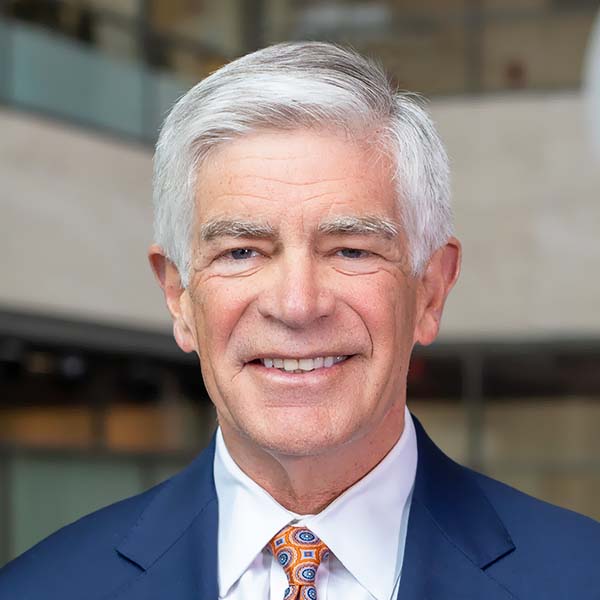Hello! It’s really great to be here, and I’m thrilled that we have such a large turnout. The interest in this event was so large, in fact, that here at the Fed, we had our own fintech issue as we were organizing it: We had to cap attendance to protect bandwidth!
That’s a good problem to have, of course, and I think it really speaks to the terrific program that the staff at the Philadelphia Fed has put together for all of us — and to the robust interest in fostering a dialogue between fintech platforms and community banks from all over the country.
So, again, welcome. I just regret that for those of you on the West Coast this program has to be BYOB — Bring Your Own Breakfast.
Now, before we proceed, I have to give you my standard Fed disclaimer: The views I express today are my own and do not necessarily reflect those of anyone else on the Federal Open Market Committee or in the Federal Reserve System.
The Importance of Community Banks
Here at the Fed we wear many hats: We’re a bank, a supervisor and regulator of other banks, and the largest collection of economists in the world. We have the ability to lend money, to foster payments and settlements, and to promote consumer protection and community development.
We also have the power to convene. And that is precisely our aim this week: to provide a forum for open discussion among community bankers, bank regulators, and the fintech industry. We’re delighted you’re here to learn about the new tools available to improve risk valuations and to enhance the customer experience for clients — among other exciting new technologies.
I’m particularly glad that we have so many CEOs and CTOs of small community banks here today. While I probably don’t need to belabor the importance of community banks to this particular audience, I think it sometimes gets lost just how central community banks are to our economy — and indeed, to American society.
Just consider the numbers. There are more than 4,800 active community bank charters across the country. And of those, almost exactly half are in communities with fewer than 50,000 residents. Community banks — those with $10 billion or less in assets — collectively hold more than $3 trillion in assets. You don’t need to rewatch It’s a Wonderful Life for the hundredth time to get a sense of how vitally important these institutions are.
Risks and Opportunities
COVID-19 and its associated economic effects have also emphasized the importance of community banks. But they have also heightened the risks to the sector in a world where more and more business is conducted online.
Given their strong relationships with local businesses, community banks were absolutely essential to operating the Paycheck Protection Program (PPP), which has kept so many small businesses afloat during the shutdowns. According to my Fed colleague, Governor Michelle Bowman, community banks have made up about 40 percent of the total value of PPP loans issued. It’s probably no exaggeration to say that PPP would have failed without community banks’ support.
But economic shutdowns imposed to curtail the spread of COVID-19 — particularly those that shuttered bank branches — have also demonstrated just how important digitization is and the perils of falling behind on fintech.
Online platforms have gobbled up an increasing number of home mortgages, for instance — particularly as COVID-19 has deemphasized the importance of the in-person interactions that are the bread and butter of community banking. I would encourage community bankers to explore digitization opportunities for your institution and customers, as well as innovative opportunities that align with your strategic plans.
I understand, of course, that there are challenges. Smaller banks often simply don’t have the workforce or the cash to first, research and investigate, and then to ultimately invest in costly fintech platforms. They lack the economies of scale that bigger banks enjoy. Set-up costs can be prohibitive. And, to be frank, there are occasional cultural differences between the “move fast and break things” ethos of many fintech suppliers and the more risk-averse sensibilities of bankers.
And those risks are real. Consider the astonishing rapidity of technological development. There are serious and understandable concerns that a year or two after making an expensive fintech investment, the technology will already become obsolete. You don’t want to be stuck with a bunch of buggy whips a year before the invention of the Model T.
And there can be a hesitancy to embrace new technologies on the client side, too, of course. A banker in our area recently told me that despite her bank’s investment in fintech — and even with her branch offices closed — many clients still use the drive-through windows to do things they could easily do at home. They’re even willing to wait for 20 minutes in their car to do so. Although, given the pandemic conditions that have kept many of us at home for a year, I certainly understand the need to get out of the house.
Conclusion
It is precisely because of these opportunities and these risks that this symposium is such a great opportunity for all of us. Constructive dialogue between fintech firms and community banks offers a path forward for both. We can listen, and we can learn from each other.
The Federal Reserve, for its part, is very supportive of innovation. We’re here to convene, to support, and to supervise.
Thanks again and enjoy the event.
- The views expressed here are the speaker’s own and do not necessarily reflect those of anyone else in the Federal Reserve System.

